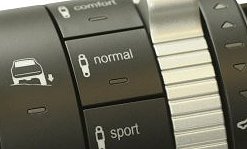Cutting costs in Day-Night Marking
 Just about all of today’s vehicles utilise day-night marking. The technology allows in-car instruments to be easy to read by day and illuminated by night without glare that could be dangerous. Day and night marking works by using a concentrated laser beam to strip layers of coloured lacquer until the correct or desired colour is exposed. At this point, the treated surface is then illuminated as intended. The technology behind the process is complex. With the need for absolute precision, accurate tooling can be a necessity and, even then, scrappage rates can be unacceptably high.
Just about all of today’s vehicles utilise day-night marking. The technology allows in-car instruments to be easy to read by day and illuminated by night without glare that could be dangerous. Day and night marking works by using a concentrated laser beam to strip layers of coloured lacquer until the correct or desired colour is exposed. At this point, the treated surface is then illuminated as intended. The technology behind the process is complex. With the need for absolute precision, accurate tooling can be a necessity and, even then, scrappage rates can be unacceptably high.
Patented Precision
TLM’s product partner, FOBA, is the company behind the patented high-speed Intelligent Mark Positioning (IMP) camera system. To ensure ultimate precision and repeatable accuracy, the system automatically detects work-pieces and their position and aligns the marking precisely. This ensures that the laser processing is carried out accurately, no matter how the work-pieces are positioned. If a component has unexpected properties such as a significant defect, it is rejected. IMP adjusts automatically to changes in the component and its position during the marking process and aligns the marking relative to these – particularly important in day-night marking.
Automotive Button Benefits
Day/night marking of automotive buttons is a typical example of how IMP can cut marking costs significantly. These components are normally placed on a tray and, if positioned incorrectly, an improper mark is the result. The trays themselves are typically made of ABS which can flex and contribute to placement inaccuracies. Accurate tooling is also a pre-requisite which adds to overall production costs.
Implementing an IMP system can allow the use of a simple plastic support saving tooling design, assembly, inspection and set up costs by as much as 75%. With IMP, laser marking a pattern onto buttons can be carried out with varying orientation and angles, meeting tight processing times as well as the necessary quality criteria. For one automotive button manufacturer, wasted parts were reduced by 90% compared to the laser system without IMP.
IMP can make further economies when small batches are required. Without IMP and with a standard tray, all of the pockets are marked by the laser, whether or not they contain a component. Because IMP physically looks for the part, only the work-piece is marked.
For more information about the benefits of IMP in Day/Night marking, go to Intelligent Mark Positioning on this site and the Day/Night Marking blog or contact sales@tlm-laser.com